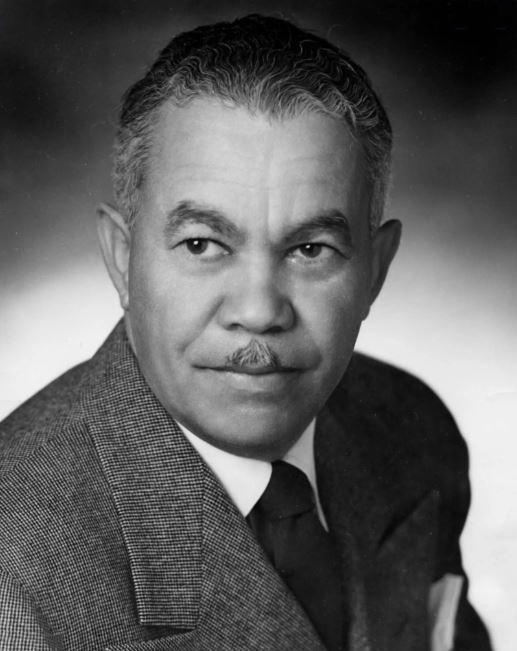Paul Revere Williams’ legacy as an architect is immeasurable, his work shaping Los Angeles with iconic structures like The Beverly Hills Hotel & Polo Lounge, The Saks Fifth Avenue Building, and the futuristic LAX Theme Building. Across a 50-year career, he designed around 3,000 buildings, becoming the first African American architect to make a significant mark west of the Mississippi and the first Black member of the American Institute of Architects (“AIA”). Despite facing racial prejudices, Williams’ innovative designs and sheer resilience broke barriers, but it was he as a man that made him a revered figure in architecture and beyond.
Karen Hudson, Williams’ granddaughter and the guardian of his legacy, provided Hilton & Hyland an intimate look at the man behind the architectural genius. “Growing up a block away from him, I saw a grandfather who never made a big deal about being an architect. Family always came first. For us, he was always just grandfather,” she shared.
 Williams’ approach to architecture was deeply personal. “To be sincere in my work, I must design homes, not houses,” he once wrote, emphasizing his dedication to creating spaces that were not only grand but warm and inviting. “While architects are typically seen as bigger deals when they create commercial works, my grandfather championed his residential architecture,” said Hudson. His knack for luxurious curves and spacious, cozy interiors made his designs timeless and a testament to his belief in the importance of the home as a central space for living.
Williams’ approach to architecture was deeply personal. “To be sincere in my work, I must design homes, not houses,” he once wrote, emphasizing his dedication to creating spaces that were not only grand but warm and inviting. “While architects are typically seen as bigger deals when they create commercial works, my grandfather championed his residential architecture,” said Hudson. His knack for luxurious curves and spacious, cozy interiors made his designs timeless and a testament to his belief in the importance of the home as a central space for living.
Despite the adversities he faced, including being orphaned at four and navigating a career path riddled with racial biases, Williams’ resolve remained unshaken. “He carried himself in a way that led by example… He was a grandfather who spoiled my brother and me, teaching us about the accomplishments of others,” Hudson recalled.
Williams’ ability to navigate prejudice with dignity was remarkable. He developed skills like drawing upside down to focus clients on his work rather than his skin color, and despite facing restrictions on where he could live or which buildings he could enter, he persevered. “He worked on The Beverly Hills Hotel at a time when he couldn’t eat or sleep there,” Hudson said.
Beyond his architectural achievements, Williams played a significant role in the Black community, contributing to the construction of businesses, churches, and institutions that helped foster progress. At the same time, his designs were being commissioned for Hollywood’s elite, including Frank Sinatra and Lucille Ball. His impact was felt most deeply within the communities he helped build and uplift.
Karen Hudson honors her grandfather’s legacy through efforts to support young people of color in architecture. “My foundation (ICCAW), created in his name, aims to support young people of color interested in architecture, offering scholarships to HBCU students and developing a K-12 program to inspire the architects of tomorrow.” She added, “The AIA today only consists of 2% Black members and I could not wake up one more night and say this is working for me.”
Paul R. Williams was more than an architect; he was a visionary who saw beyond the constraints of his time, crafting a legacy that continues to inspire and shape the world.
